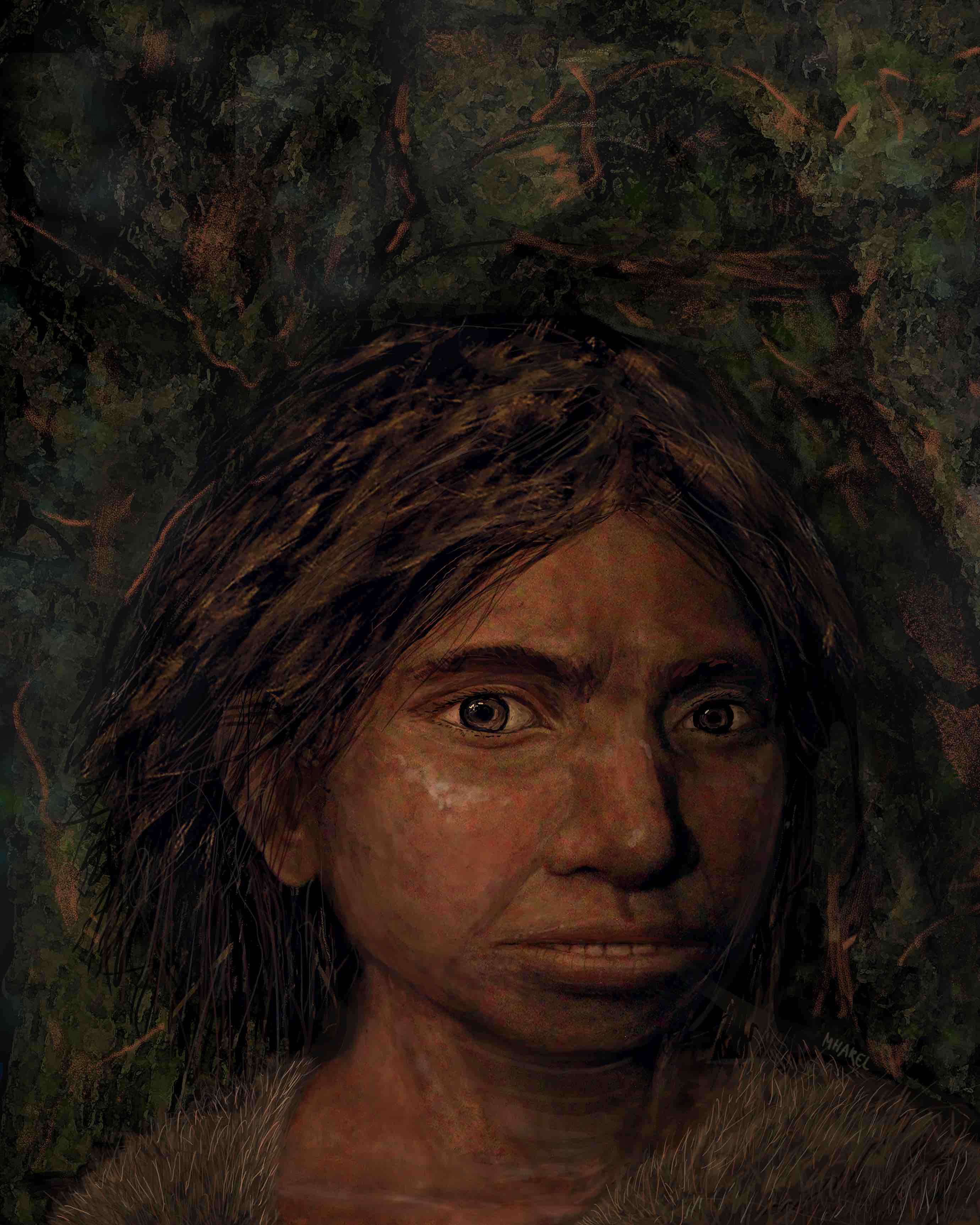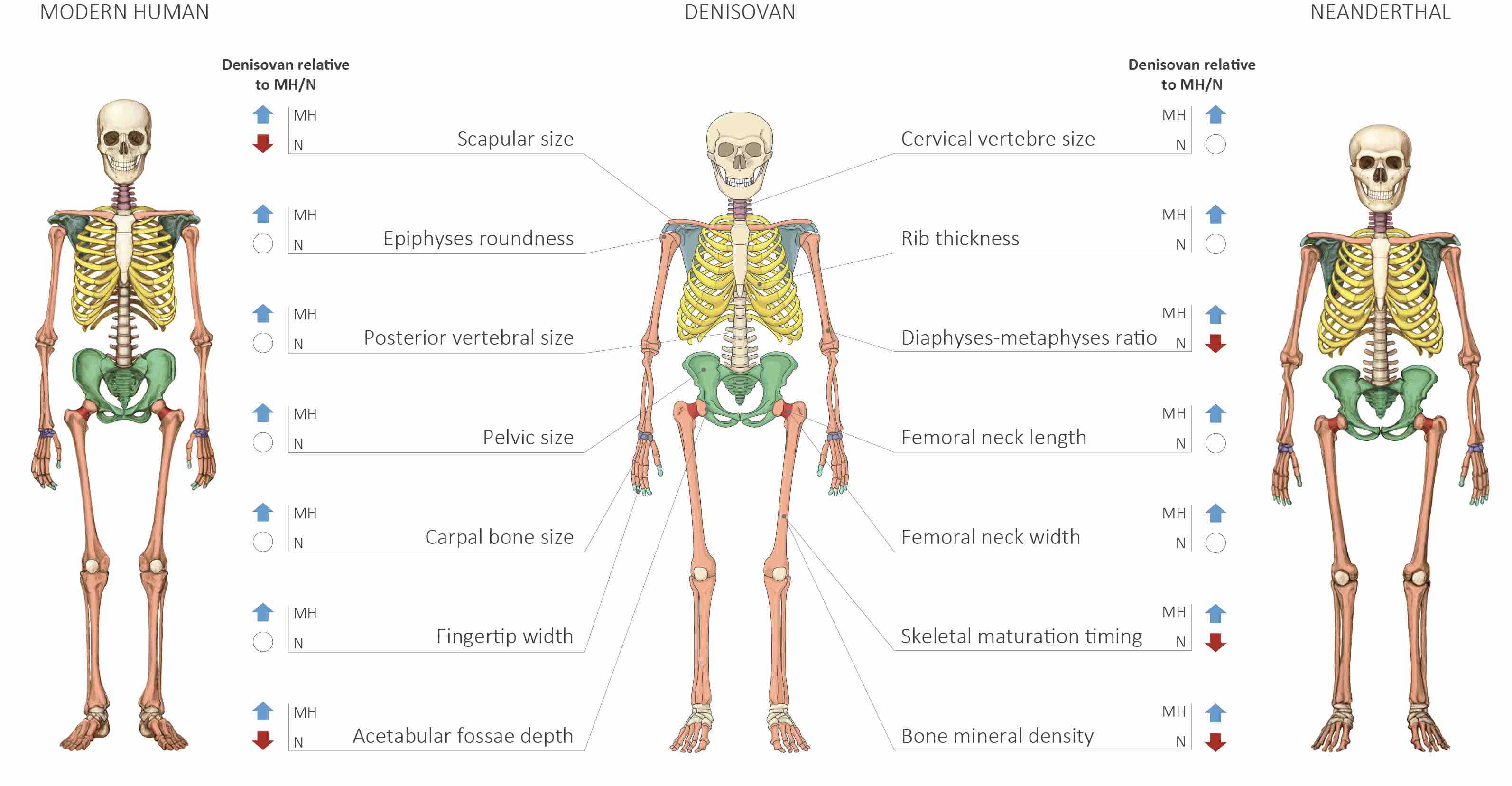Revelan qué aspecto tenían los misteriosos denisovanos a partir de la punta de un hueso meñique
Revelan qué aspecto tenían los misteriosos denisovanos a partir de la punta de un hueso meñique
El estudio, publicado en la revista Cell y con la participación de investigadores del Instituto de Biología Evolutiva (IBE), proporciona por primera vez una reconstrucción del aspecto físico de esta población humana aún totalmente desconocida.
Los resultados, obtenidos con un novedoso método de análisis genómico, revelan hasta 56 rasgos físicos del homínido de Denísova solo a partir de datos moleculares.
Impulsado por “la Caixa”, el trabajo abre una ventana para comprender cómo estos homínidos se adaptaron a su entorno y arroja luz sobre los rasgos que nos separan de esta población extinta.
 Un equipo de investigación internacional con participación del Instituto de Biología Evolutiva (IBE), un centro mixto de la Universidad Pompeu Fabra (UPF) y del Consejo Superior de Investigaciones Científicas (CSIC), revela qué aspecto tenían los misteriosos denisovanos a partir de la punta de un hueso meñique.
Un equipo de investigación internacional con participación del Instituto de Biología Evolutiva (IBE), un centro mixto de la Universidad Pompeu Fabra (UPF) y del Consejo Superior de Investigaciones Científicas (CSIC), revela qué aspecto tenían los misteriosos denisovanos a partir de la punta de un hueso meñique.
El descubrimiento científico único, liderado por la Hebrew University of Jerusalem (HUJI) y con la participación del grupo de Tomàs Marquès-Bonet en el IBE, proporciona una primera visión de la anatomía de esta población humana poco conocida solamente a partir de datos moleculares del ADN de un individuo.
El estudio se publica hoy en la prestigiosa revista Cell, que además ilustra en portada esta investigación con la reproducción de una niña denisovana.
El homínido de Denísova: un descubrimiento genético
Aunque todas y todos hemos nacido en un mundo poblado por una única especie humana, hace sólo 50,000 años el humano moderno convivía con otras poblaciones de homínidos. Un ejemplo son los neandertales, de los que sabemos bastante gracias a sus numerosos restos fósiles encontrados en Europa y Asia. Mucho más misterioso resulta el homínido de Denísova, descubierto hace apenas una década. Sobre esta población sabemos que vivió en Siberia y Asia Oriental, y que se extinguió hace menos de 50,000 años.
Mientras que las demás poblaciones humanas han sido identificadas en base a los restos fósiles, los denisovanos se han descubierto en base al análisis genético del ADN. El motivo principal es que los restos fósiles de los denisovanos encontrados son demasiado escasos como para proporcionar información sobre su apariencia (comprenden solo una falange de dedo meñique, tres dientes y una mandíbula inferior), y de ahí que aún sean un misterio. Sin embargo, ahora un equipo de investigación ha logrado reconstruir qué aspecto tenían los homínidos de Denísova solamente a partir de su ADN.
Reconstruyendo el homínido de Denísova a partir de cambios químicos en el ADN
El equipo de investigación aplicó una nueva técnica de análisis genómico para revelar por primera vez hasta 56 rasgos que caracterizan al homínido de Denísova. El novedoso método permite asociar cambios en la actividad de regulación genética en fósiles con cambios anatómicos entre grupos humanos para predecir su apariencia física. Para ello, los investigadores han empleado información sobre el efecto de las enfermedades monogénicas - que afectan solo a un gen - en la anatomía de las poblaciones homínidas conocidas.
El método ha permitido al equipo predecir cuál era el aspecto del homínido de Denísova solo analizando el ADN de un hueso meñique. “Por primera vez podemos hacernos una idea de cómo eran los denisovanos, solo a partir de datos moleculares”, comenta Tomàs Marquès-Bonet, profesor de investigación ICREA y director del Instituto de Biología Evolutiva (IBE), y uno de los autores del estudio. “Además, este trabajo es un ejemplo de como el conocimiento biomédico puede aplicarse a la evolución para ayudarnos a descifrar cómo eran nuestros ancestros”.
Respecto al aspecto de la misteriosa población, el primer autor y corresponsable del estudio David Gokhman de la Hebrew University of Jerusalem (HUJI) comenta que “en muchos rasgos se parecen a los neandertales, por ejemplo, en su frente inclinada, cara alargada y pelvis grande”. “Sin embargo, otros rasgos resultan particularmente fascinantes, como su gran arco dental y su cráneo muy ancho, únicos entre los homínidos”, añade.

Un método genómico eficaz y con confirmación independiente
Para comprobar la eficacia del método, los investigadores primero demostraron que la técnica reconstruye con precisión la anatomía de los neandertales y los chimpancés, ampliamente descritos. Sin embargo, la mayor confirmación llegó con el descubrimiento de la primera mandíbula de denisovano en una reciente expedición.
“Uno de los momentos más emocionantes sucedió unas semanas después de que este artículo fuera enviado a revisión: otro equipo identificó la primera mandíbula de denisovano, así que comparamos el hueso con nuestras predicciones para descubrir que coincidían perfectamente. Por lo tanto, sin siquiera planearlo, recibimos una confirmación independiente de nuestra capacidad para reconstruir con precisión los perfiles anatómicos basados en un poco de ADN de la punta de un dedo meñique", comenta el profesor Liran Carmel de la HUJI, responsable del estudio.
La huella de una población en la punta de un meñique
Hasta ahora, el análisis del ADN había revelado que los denisovanos se aparearon con los antepasados de los humanos modernos que viven hoy en Australia, las islas del Pacífico, el este de Asia y el sudeste asiático. El ADN denisovano probablemente habría contribuido a la capacidad de los tibetanos para vivir en grandes altitudes, y a la capacidad de los inuits para vivir en regiones polares, al cruzarse con las poblaciones de estas regiones hace decenas de miles de años.
Ahora, este estudio abre una ventana para comprender cómo estos homínidos se adaptaron a su entorno, y arroja luz sobre los rasgos que son exclusivos de los humanos modernos y que nos separan de esta otra población extinta.
“¿Podrían estos rasgos arrojar luz sobre su estilo de vida? ¿Podrían explicar cómo sobrevivieron los denisovanos en el frío extremo de Siberia? Todavía hay un largo camino por recorrer para responder estas preguntas, pero nuestro estudio abre una ventana para comprender cómo estos humanos se adaptaron y qué nos diferencia de ellos. En todo caso, este artículo demuestra el poder de combinar datos biomédicos con estudios evolutivos", concluye Marquès-Bonet.
La investigación ha sido impulsada por “la Caixa”, el Howard Hughes International Career, la National Geographic Society y la Clore Israel Foundation, entre otros.
Artículo referenciado: Gokhman et al., Reconstructing Denisovan Anatomy Using DNA Methylation Maps, Cell (2019); https://www.cell.com/cell/fulltext/S0092-8674(19)30954-7; DOI: http://doi.org/10.1016/j.cell.2019.08.035
